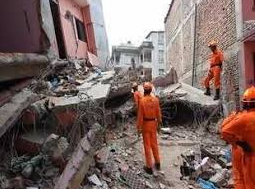After a devastating earthquake, Mandalay’s tragic transformation highlights the ongoing challenges in Myanmar’s struggle for recovery.
Mandalay, once celebrated as the ‘City of Gold’ for its golden pagodas and Buddhist monuments, now finds itself overwhelmed by the scent of death following a powerful earthquake that struck on 31 March 2025. The 7.7 magnitude tremor, which also impacted parts of Thailand and China, has wreaked unparalleled devastation in Myanmar’s former royal capital.
The confirmed death toll has surpassed 2,700, with thousands more injured or missing. As the quake’s aftershocks continue, residents in Mandalay are grappling with the aftermath of collapsed buildings, scarce resources, and a desperate search for survivors. “Bodies are being cremated in stacks,” a local resident recounted, reflecting the grim reality faced by the city.
The situation in Mandalay is dire. Residents have been forced to sleep in the streets, living in tents or nothing at all, as they fear further aftershocks may destroy what remains of their homes. Supplies of food and water are rapidly dwindling, leaving many without essentials. Local authorities have been overwhelmed by the sheer scale of the damage. Many crematoriums are now unable to process the vast number of bodies, and there is a severe shortage of body bags and other necessary supplies.
While survivors continue to be pulled from the rubble, the number of casualties is expected to climb. According to Myanmar’s military chief, the death toll could exceed 3,000, although independent experts warn that it could reach as high as 10,000 due to the earthquake’s impact and the location of the epicentre.
Mandalay’s residents are deeply traumatised, with many struggling to come to terms with the scale of destruction. A local pastor shared that his young son has been traumatised by the sight of bodies being recovered in their neighbourhood, a reflection of the psychological toll this disaster is taking on the younger generation. “We are feeling hopeless and helpless,” said one resident, echoing the sentiments of many others.
The relief efforts in Myanmar are hindered by the country’s ongoing civil conflict, and infrastructure issues have made it difficult to reach affected areas. The military junta, which has faced international condemnation for its oppressive actions, has been slow to allow aid workers into earthquake-stricken regions. Despite pledging to accept international assistance, restrictions have been imposed on organisations attempting to provide relief, making the situation even more critical.
International aid has been slow to arrive, and although some countries, including Russia and China, have offered support, the scale of the disaster has left many feeling abandoned. The military’s response to the crisis has drawn further criticism, especially as it continues its violent crackdown on local villages. Humanitarian groups have called for the junta to allow immediate access to the areas most in need of assistance.
As the city mourns, Myanmar holds a week of national mourning, yet the survival of its people remains uncertain. With millions displaced by the ongoing conflict and now compounded by the earthquake, the road to recovery will be long and fraught with challenges.


